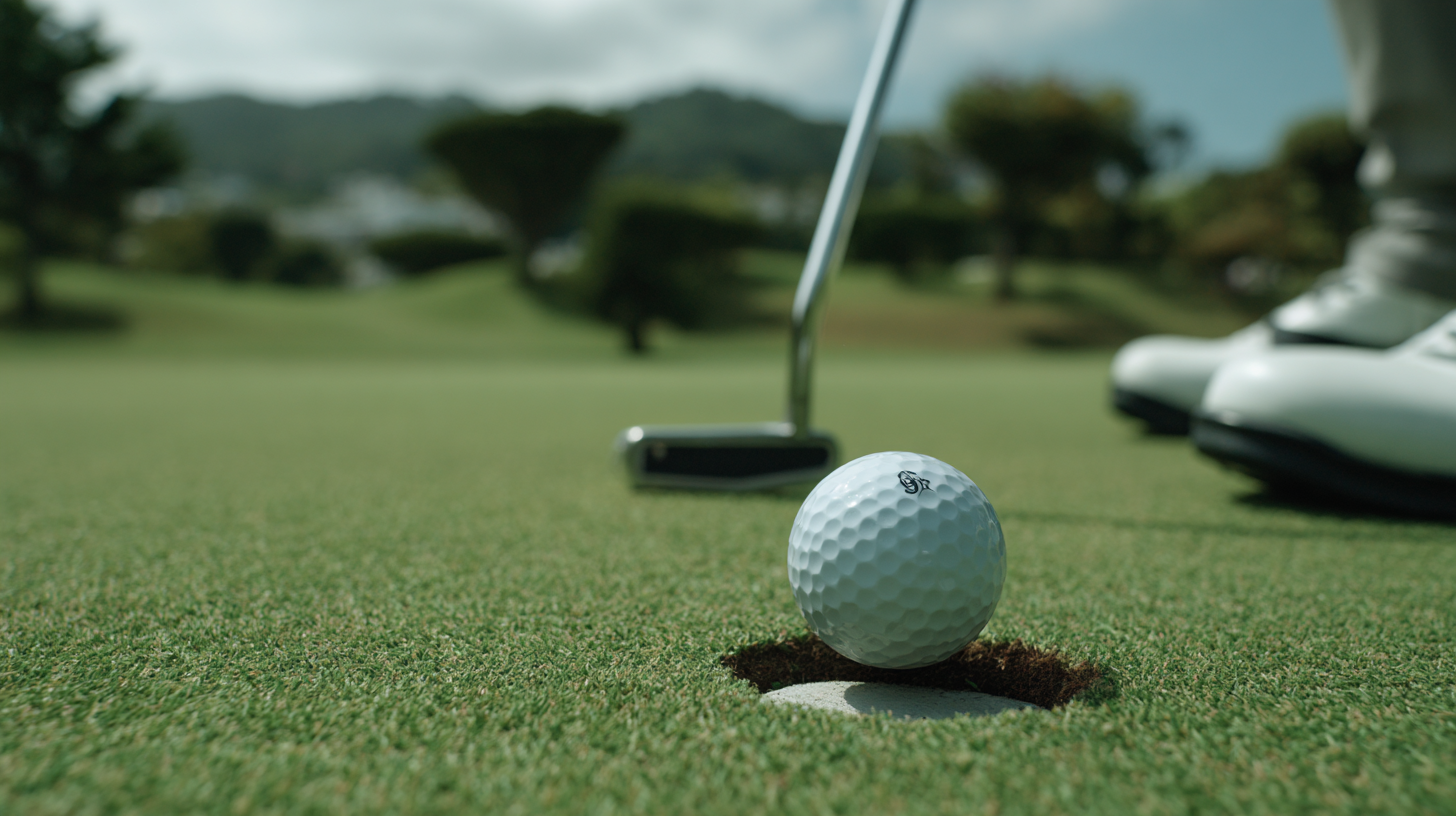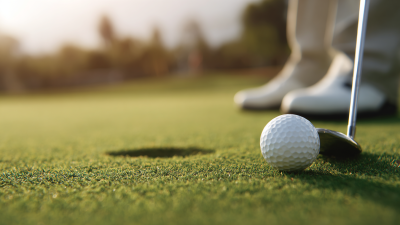Mastering true golf skills and techniques is vital for golfers at all levels, as it greatly impacts their performance, enjoyment, and progression in the sport. According to a report by the National Golf Foundation, approximately 24 million golfers in the United States are actively participating in the sport, highlighting the importance of effective training methods and skill development. As golfers strive to improve, mastering these true golf skills becomes essential for lowering scores and enhancing overall enjoyment on the course.
Moreover, the complexity of golf demands a multifaceted approach to skill development. A study published by the International Journal of Golf Science emphasizes that 90% of golfers do not practice their skills effectively, leading to stagnation in improvement. This underlines the necessity for golfers to adopt a focused methodology that hones in on true golf techniques, enabling them to transcend common pitfalls and elevate their game. By implementing targeted strategies, golfers can refine their skills, ensuring they not only play more effectively but also experience the true joy of the game.

 A solid grip is fundamental to achieving consistent performance in golf. According to the National Golf Foundation, nearly 70% of golfers report that improving their grip technique significantly enhances their overall game. An effective grip allows for better control of the clubhead, enabling a more accurate and powerful swing. Proper grip techniques can reduce the likelihood of mishits and optimize contact with the ball, ultimately leading to lower scores on the course.
A solid grip is fundamental to achieving consistent performance in golf. According to the National Golf Foundation, nearly 70% of golfers report that improving their grip technique significantly enhances their overall game. An effective grip allows for better control of the clubhead, enabling a more accurate and powerful swing. Proper grip techniques can reduce the likelihood of mishits and optimize contact with the ball, ultimately leading to lower scores on the course.
To master grip techniques, players should focus on the Vardon grip, which is commonly used by professional golfers. This grip involves overlapping the pinky finger of the trailing hand over the index finger of the lead hand, allowing for better wrist hinge and club control. Research by the PGA reveals that golfers who adopt the Vardon grip often see an increase in average driving distance by up to 15 yards due to improved mechanics and stability during the swing. Additionally, players should ensure their grip pressure is light yet firm, as tension can hinder fluidity in their swings. Implementing these essential grip techniques is paramount for those looking to improve their golf performance significantly.
Achieving a solid stance is fundamental for any golfer looking to enhance stability and balance throughout their swing. A well-structured stance not only provides a stable foundation but also allows for a fluid transfer of energy from the body to the club. Start by positioning your feet shoulder-width apart to create a strong base. Distributing your weight evenly between both feet ensures you maintain balance during the swing, preventing any unnecessary swaying or shifting of weight that can lead to inconsistent shots.
Equally important is the alignment of your body with the target. When you set up, make sure your shoulders, hips, and knees are parallel to the target line. This alignment not only facilitates a more accurate swing path but also helps you visualize the shot. Additionally, consider slightly bending your knees and maintaining a relaxed posture; this will allow for greater flexibility and better rotation during your swing. By focusing on these aspects of your stance, you can significantly improve your ability to deliver a powerful and precise shot, ultimately mastering the essential skills that every golfer strives to achieve.
The golf swing is a complex interplay of mechanics, physics, and technique, crucial for achieving both distance and accuracy. According to a 2022 report by the National Golf Foundation, nearly 70% of golfers identify swinging technique as the most important skill to develop. Mastering the art of the swing involves understanding the proper alignment, grip, and stance, which can collectively lead to a more efficient energy transfer throughout the swing. Golfers who focus on these fundamentals can expect to improve their driving distance by an average of 10-15 yards, as indicated by a survey of performance metrics from the PGA Tour.
Moreover, biomechanics plays a pivotal role in enhancing swing mechanics. A study published in the Journal of Sports Sciences suggests that professional golfers generate over 100 mph of clubhead speed by utilizing effective rotational movements and wrist hinge. By incorporating strength and flexibility training, golfers can enhance their swing mechanics, leading to increased power and precision. The report highlights that a 5% improvement in swing mechanics can lead to a 15% increase in shot accuracy, showcasing the importance of technique refinement in achieving lower scores on the course.
Understanding course management is crucial for golfers looking to lower their scores and enhance their overall performance. According to a study by the United States Golf Association (USGA), nearly 60% of golfers do not consider course management strategies when playing, which can significantly hinder their ability to play effectively. Good course management involves making strategic decisions based on various factors such as the layout of the course, weather conditions, and individual abilities. By understanding where to take risks and where to play conservatively, a golfer can effectively reduce unnecessary strokes.
A report published by Golf Digest highlighted that golfers who take time to analyze a course before playing can improve their scores by an average of 5-10 strokes per round. This can be achieved by mapping out the safest and most advantageous routes to the greens, evaluating hazards, and selecting the right clubs based on specific situations. Players should practice distance control and trajectory, which can also aid in managing tricky lies or challenging pin placements. Emphasizing course management can transform amateur golfers into more strategic players, showcasing how mental skills can be just as important as technical skills in achieving better results on the course.
 Mastering the short game is crucial for any golfer aiming to lower their scores, particularly through chipping and putting. According to the National Golf Foundation, about 40% of a golfer's strokes occur on the putting green. This statistic highlights the importance of dedicating time to perfect these skills. Effective chipping techniques can significantly enhance a player's ability to get closer to the hole, with research suggesting that a successful chip can save 1-2 strokes per round.
Mastering the short game is crucial for any golfer aiming to lower their scores, particularly through chipping and putting. According to the National Golf Foundation, about 40% of a golfer's strokes occur on the putting green. This statistic highlights the importance of dedicating time to perfect these skills. Effective chipping techniques can significantly enhance a player's ability to get closer to the hole, with research suggesting that a successful chip can save 1-2 strokes per round.
When it comes to putting, consistency is key. The average golfer typically makes only 36% of putts from 10 feet, emphasizing the need for improved focus and technique. Developing a reliable routine can help reduce anxiety on the green. Techniques such as proper alignment, a smooth stroke, and maintaining an even tempo are essential. Additionally, using drills that focus on distance control and accuracy can further aid in building confidence. Embracing these short game principles will undoubtedly lead to improved performance and a more enjoyable golfing experience.






© 2022-2025 Pelican Lakes Resort & Golf, All rights reserved | Privacy Policy
BROUGHT TO YOU BY THE WATER VALLEY COMPANY